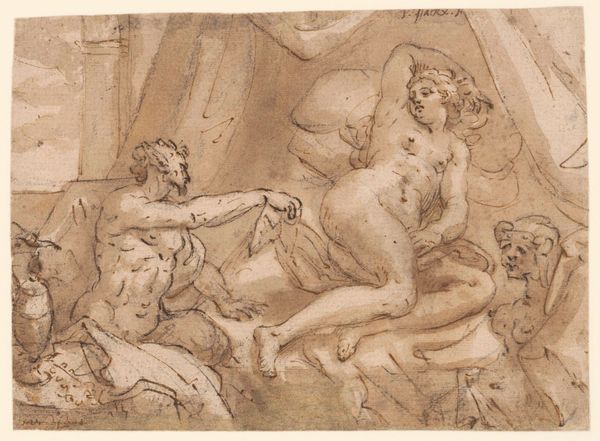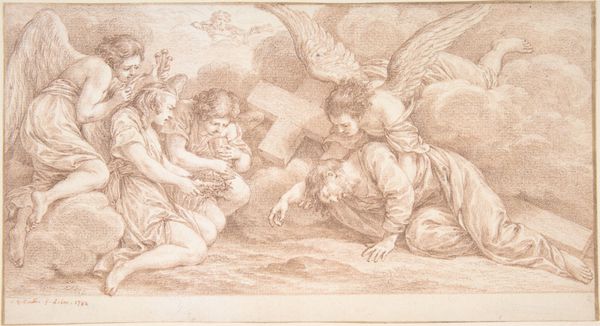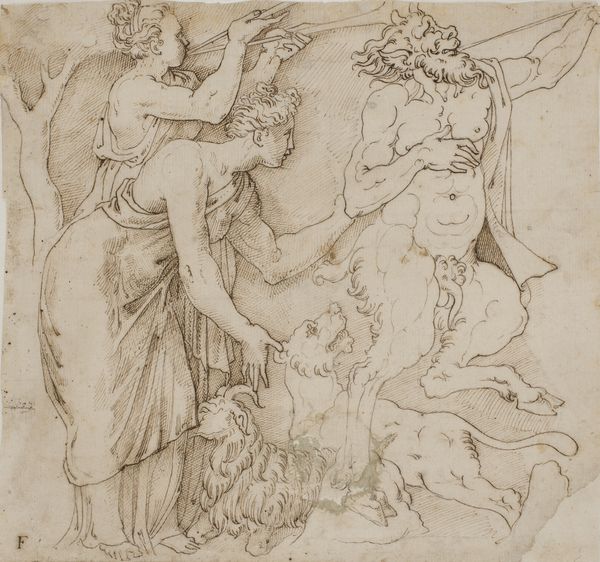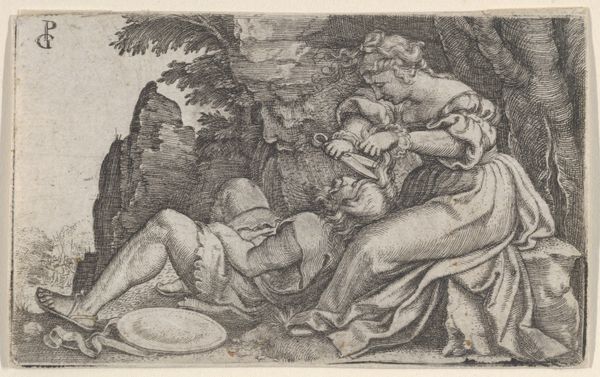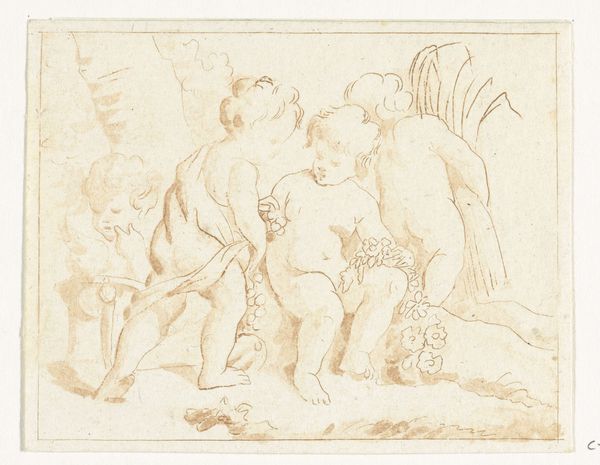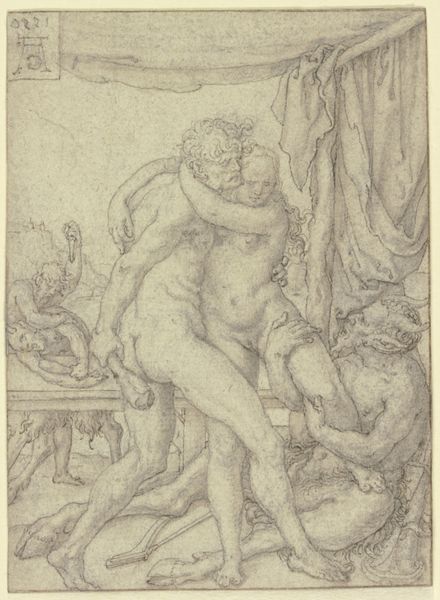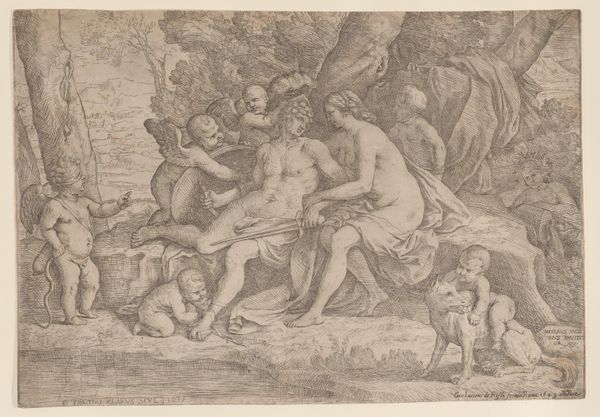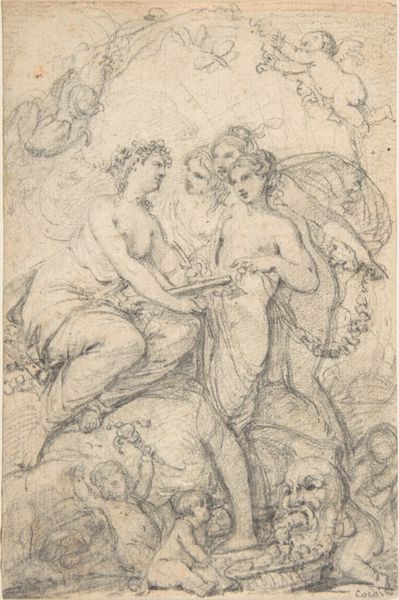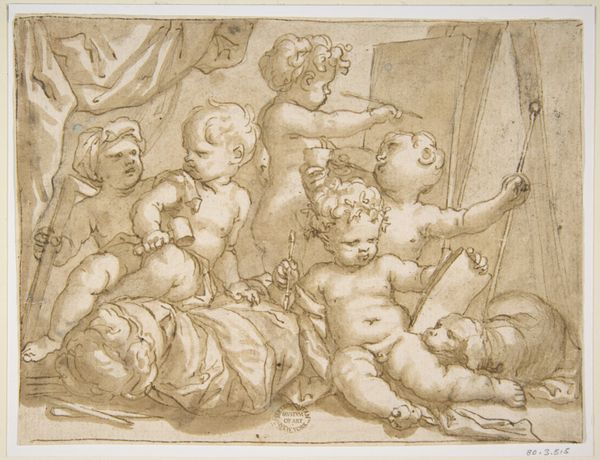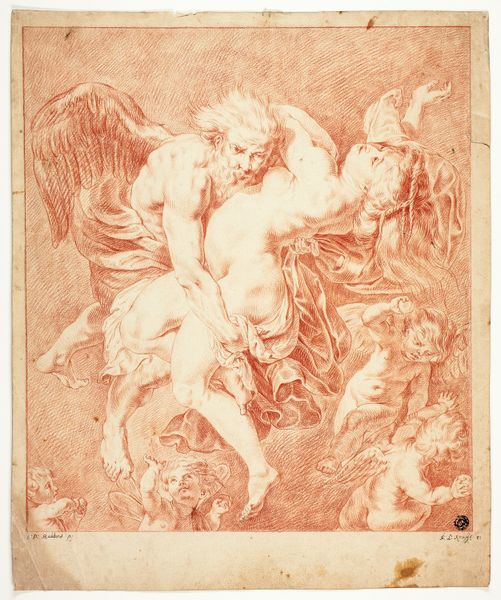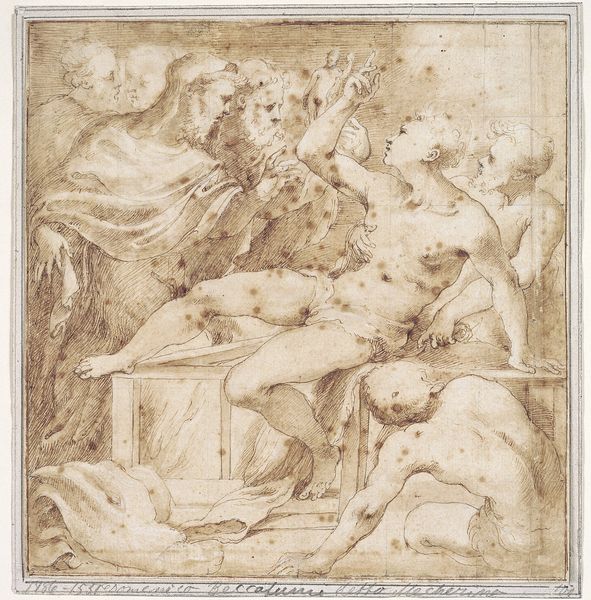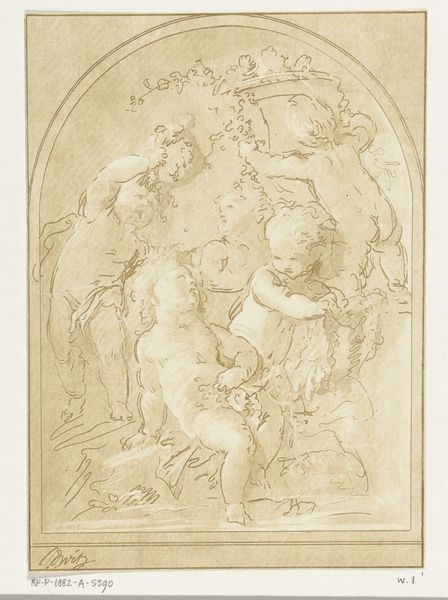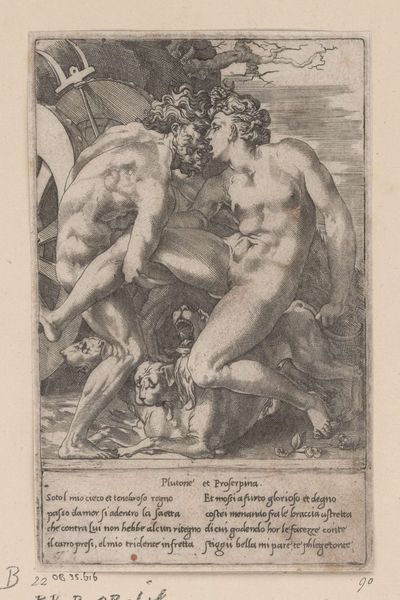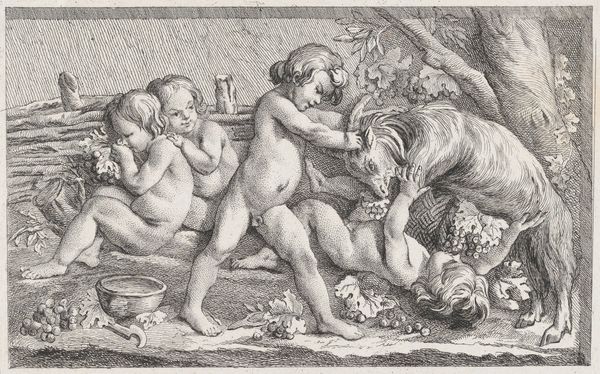
drawing, charcoal
#
portrait
#
drawing
#
baroque
#
charcoal drawing
#
figuration
#
genre-painting
#
charcoal
#
academic-art
Dimensions: 121 mm (height) x 161 mm (width) (bladmaal)
Editor: Here we have "Two putti playing with a cat and two birds," a charcoal drawing by Valerio Castello, dating from sometime between 1624 and 1659. I'm struck by the dynamism of the figures, how they’re caught in a moment of play. How do you interpret this work? Curator: It’s fascinating to consider this drawing in the context of its time. Castello was working during the Baroque period, but even then, what does this seemingly innocuous scene tell us about the role of children, or rather, cherubic figures, in art and society? The putti, often stand-ins for innocence, are actively engaging—almost wrestling—with the cat and birds. Editor: Almost like a power dynamic? The putti asserting dominance over nature? Curator: Precisely! The image can be read through a lens of control and subjugation. Whose gaze is privileged? Are the animals here stand-ins for the "other," and what does it mean that these cherubic, idealized children are the agents of that control? The netting, perhaps, refers to enclosure and confinement? What philosophical narratives might those symbols draw on in 17th century Italian culture? Editor: I see what you mean. The cute scene actually becomes a little unsettling. The cat is playfully fighting back. Are those actions an allegorical hint at a contemporary debate around religious or philosophical power struggles of the time? Curator: It absolutely invites us to question surface appearances and dig deeper into the artwork’s potential commentaries. It's not just about aesthetic beauty but about underlying structures of power represented through these symbols. What does innocence mask? Editor: That completely changes how I see the drawing. I was focusing on the surface, but there's so much more to unpack about the historical and social context. Curator: Exactly! Now when you look at seemingly innocent figures, consider who benefits from their portrayal. And where do they place themselves in intersectional terms with race, identity, gender and societal pressures?
Comments
No comments
Be the first to comment and join the conversation on the ultimate creative platform.
